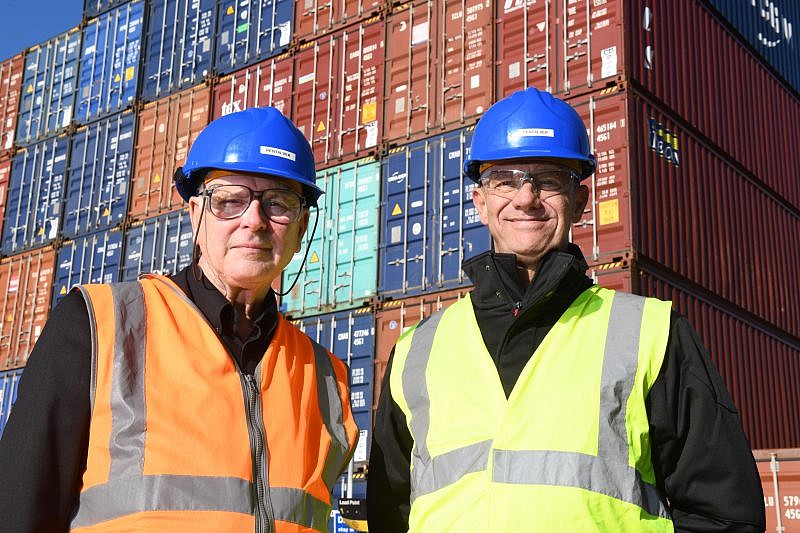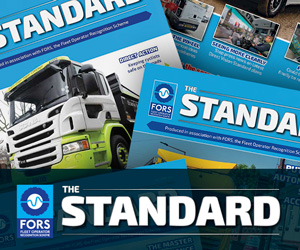
Despite impressive technological advances in recent years in the manufacture and fitting of quality retreads, there are still a lot of stubborn myths about retreading out there. It’s about time we set a few things straight! If you have any doubts about the safety, reliability, performance or cost-efficiency of retreads, you should definitely read the thoughts of GW group fleet manager.
Retreads are not safe
Let me ask you this? What speed does a 747 land at Answer 187 mph! What weight is a full loaded 747 plane Answer 130 tons!
Why do l ask that! To remove the Myth
If you think retreads are unsafe, don’t fly – nearly every major airline company equips its planes with retreads.
Quality new tyres are manufactured to be retreaded.
Only thoroughly inspected casings are used for retreading.
Retreading is a controlled process using high-tech equipment.
The retreading is subject to annual homologation (ECE109), applying similar durability tests as for the homologation of new tyres.
For many years retreading solution has been available to transport operation saving money by going green and go for sustainability is the answer. In addition to cutting tyre cost per km, retreading also helps you to reduce our ecological footprint, by managing future scarcity of raw materials and ensuring efficient use of key resources. Retreading is one of the oldest examples of circular economy, in that the worn tyre is recovered from becoming waste.
70% less Oil
Retreading produced with just 30% of the oil required to manufacture new tyres.
Reduced CO2 Emissions
It takes just a fraction of the energy to produce retreads in comparison with new tyres, adding up to 80% less CO2 and other carbon emissions.
Recycled & Reused Materials
Retreads contain up to 75% recycled and reused material, contributing further to sustainability and circular economy. Premium new tyre casings are made to last a second or even a third life as a retread. Re-using the worn casing as main retread component allows to save up to 70l of oil, up to 32 kgs of rubber and 14 kg of steel*, that would have been used had the worn tyre be replaced by a new tyre.. Worldwide over the course of a year, that adds up very quickly!
This is why Pentalver and Freightliner brands adopt a policy of New and remold products on our fleets.
Engineering advances are key to cost saving and sustainability in the transport industry so let’s look at so of the costs incurred and the saving a good tyre management system can save a business.
The use of fuel efficient tyres on all axles can make a significant difference in fuel consumption, a reduction of 10% rolling resistance on a complete vehicle results in approximately 3% reduced fuel consumption (approx 0.9 litres/100 kilometres on a vehicle which consumes 30 litres/100 kilometres).
Rib type tyres are more efficient due to their lower rolling resistance when compared to block design tyres. This is mainly due to less movement of the tread in the contact patch area. Additionally, low aspect ratio tyres are stiffer, allowing for less flexing under load, thus they typically have lower rolling resistance compared to high aspect ratio tyres.
Improving fuel economy is high on any agenda. Poor economy is literally burning money and profit. There are many factors that contribute to good or bad fuel economy. Tyre choice, maintenance and condition can affect up to 1/3 of the vehicle’s total fuel consumption.
Each tyre creates a type of drag called rolling resistance. A low rolling resistance results in better fuel economy. A great deal of this rolling resistance is the direct result of energy loss due to tyre deformation as it travels over the road.
Rolling resistance is heavily dependent on inflation pressure. An inflation pressure 1 bar below the recommendation for the axle load can lead to a 5% increase in rolling resistance, resulting in a significant fuel cost. In addition, under inflation can have a negative effect on tyre durability – resulting in premature tyre failure, and a carcass unsuitable for retreading.
1 bar under inflation in every tyre can cost £800 of fuel per year.
Rolling resistance increases linearly with speed. However, a vehicle’s aerodynamic resistance goes up exponentially with speed. As a result, tyres are a proportionally smaller percentage of the total drag on a vehicle as the speed increases. Reducing speed will reduce aerodynamic resistance and, to a lesser degree, rolling resistance too.
Some causes of fuel economy variation cannot be controlled – these include ambient air temperature, weather conditions, road surfaces (sand, gravel, asphalt, concrete) and terrain (flat, hilly or mountainous). However, there are other factors that can be improved.
Incorrect axle alignment drastically influences rolling resistance, decreasing fuel economy and causing accelerated tyre wear.
The driver has a huge influence on the amount of fuel the vehicle consumes. An aggressive driving style can negate the gains obtained from investments in fuel efficient tyres and engines, aerodynamic devices or synthetic lubricants. It’s now possible to accurately measure the amount of fuel a vehicle uses, allowing for drivers who employ a good driving style to be rewarded for their good fuel efficiency.
Using fuel efficient tyres in place of standard tyres in combination with good vehicle and tyre maintenance with an economic driving style minimises fuel consumption
In an ideal world, tyres would only be used at their correct pressures and on flat motorways which are perfectly surfaced with good tarmac. That would allow them to realise 100% of their working life expectancy. In the real world we encounter many road surfaces and situations that reduce tyre life, including corners, steep hills, badly made roads and routes that require more use of brakes
Class B roads reduce tyre life by 24%
Country Road reduce tyre life by 50%
Poorly made road and broken surfaces reduce tyre life by 78%
A frequent cause of early tyre deterioration and failure is misuse through bad driving. Riding kerbs, excessive braking and harsh cornering can all lead to excessive tyre wear and damage. Bad driving habits cost money.
Poor vehicle maintenance and using a vehicle with damaged or worn components, particularly in steering and suspension lines, can lead to uneven and premature tyre wear or failure.
To tackle the about Pentalver have taken the view to form a partnership with Bridgestone one of the most technical advanced trye manufactures in the world.
By working with the Bridgestone group Pentalver is on course to save £500,000 pounds in 2019/2020 on fuel and to reduce its carbon footprint in 2019/2020.
Working with Bridgestone Pentalver’s group fleet manager help design a fuel saving tyre via there Bandag remold operation which has a lower ratio aspect and improved rolling resistance these tyres where placed on trial in there Cannock operation and the benefits of these have started to improve the fuel performance by 3%, a decision has now been made to replace all worn tyres with the Bridgestone fuel saver range this will include the lasted Eucopia range on the tractor unit fleet, trailers with continue to use the bespoke remold developed by Bandag for their operation.
Linked with the tyre technology Pentalver are also working with the web fleet devision of Bridgestone to provide information to the Pentlver training academy to improve driver styles of its drivers thus improving safety and vehicle performance across its operation coupled with this is Pentalver’s in house maintained facility based in Cannock providing full control and management of it tyres at that site.
Correct inflation of tyres
Twining of tyres
Turning on rim
Regroving of tyres
To support this Pentalver have a Bridgestone partner to manage its out based fleets to the same level under the banner of ULM who’s mobile operation provide this service and cover the UK should they be any requirement for road side assistance.



